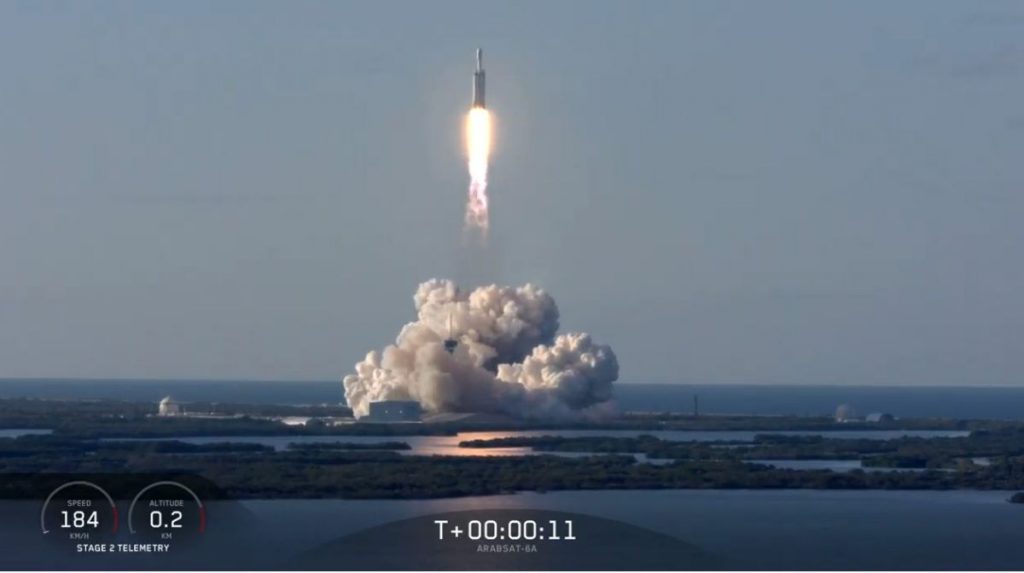SpaceX’s Falcon Heavy rocket is about to take flight for the first time in 40 months.
A Falcon Heavy is slated to launch the classified USSF-44 mission for the U.S. Space Force on Tuesday (Nov. 1). It will be just the fourth-ever liftoff for the Falcon Heavy, the most powerful rocket currently flying, and its first since June 2019.
During that stretch of more than three years, SpaceX has launched more than 100 missions with its workhorse Falcon 9 rocket. So why has the Heavy stayed grounded?
Related: SpaceX gearing up for 1st Falcon Heavy launch since 2019 (photo)
The rocket’s impressive muscle provides part of the answer. Most satellite operators don’t need a vehicle that can deliver 70 tons (64 metric tons) of payload to low Earth orbit, as the Heavy can, so they go with cheaper medium-lift options like the Falcon 9. (SpaceX sells Falcon 9 missions for $67 million, whereas a standard Heavy flight goes for $97 million.)
“The bigger vehicles — really, it’s the government that needs those,” Phil Smith, a space industry analyst at the Virginia-based consulting firm BryceTech, told Space.com.
Burly rockets like the Falcon Heavy, Arianespace’s Ariane 5 and United Launch Alliance’s Delta IV Heavy primarily launch big, bespoke satellites, Smith explained. And such craft tend to be built and operated by government agencies like NASA and the U.S. National Reconnaissance Office, not commercial satellite companies.
While these expensive one-offs don’t fly nearly as often as telecom satellites, they do need rides on a fairly regular basis. An Ariane 5 launched NASA’s $10 billion James Webb Space Telescope on Dec. 25, 2021, for example; the European vehicle has two missions under its belt this year as well. The Delta IV Heavy has launched three times since the Falcon Heavy last lifted off. So there must be more to the explanation than simple demand.
There is, and it centers largely on bad luck — or, at least, a factor that’s beyond SpaceX’s control.
“It’s not the vehicle; it’s the delivery of spacecraft,” Smith said.
Several planned Falcon Heavy launches have been pushed back significantly due to issues with their satellites, he explained. USSF-44 is one such mission; it was originally supposed to lift off in late 2020, but payload problems scuttled that plan, as SpaceflightNow noted (opens in new tab). (Military officials have not disclosed the nature of the issues that caused the delay.)
NASA’s Psyche asteroid mission is another example. Psyche, which will visit the bizarre metallic space rock that it’s named after, was scheduled to launch atop a Falcon Heavy this fall. But software issues have pushed the liftoff back to July 2023 at the earliest, and there’s a chance the mission could be canceled.
Indeed, a quick look at the Falcon Heavy manifest shows that there’s robust demand for the heavy lifter. For instance, NASA has tapped the Heavy to launch some of its highest-profile hardware over the coming years, including the Europa Clipper mission in 2024, key elements of the Gateway moon-orbiting space station that same year, and the Nancy Grace Roman Space Telescope in 2026.
SpaceX is working on a giant new rocket, called Starship, which the company thinks will eventually take the baton from Falcon 9 and Falcon Heavy.
Starship could launch on its first orbital test flight in the next few months and become operational within a year or two, if all goes well. But demand for the services of both Falcon 9 and Falcon Heavy will likely persist for a considerable stretch despite the new vehicle’s availability, Smith said.
“The Falcon 9 is an extremely popular and successful vehicle, and customers like that,” he said. “So that’ll be around for quite a while. And the Falcon Heavy — I have no reason to believe that it won’t be, either. The tooling for the system remains, so as long as the factory is able to produce them, [SpaceX] would provide that option from a marketing point of view.”
Mike Wall is the author of “Out There (opens in new tab)” (Grand Central Publishing, 2018; illustrated by Karl Tate), a book about the search for alien life. Follow him on Twitter @michaeldwall (opens in new tab). Follow us on Twitter @Spacedotcom (opens in new tab) or on Facebook (opens in new tab).

